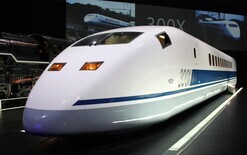AA urges to buy new
You are more likely to die in a crash if the car you're travelling in was built before 2000. In order to illustrate this, the AA and New Zealand Transport Agency (NZTA) has revealed the result of a car-to-car crash test conducted by independent vehicle safety advocate ANCAP (Australasian New Car Assessment Programme). During a controlled test, a 1998 Toyota Corolla was lined up against its 2015-built counterpart (which has a five star ANCAP safety rating) and crashed in a simulated off-set head-on. The test was conducted during the fourth United Nations Global Road Safety week to highlight the role safer vehicles play in improving crash outcomes for vehicle occupants. The 1998 Corolla was built before the current frontal impact rule was applied that sets minimum safety standards for cars sold in New Zealand. It’s also not equipped with life-saving airbags. “This week’s crash test shows the driver in the older vehicle would likely have been killed or very seriously injured,” says AA Motoring Services General Manager Stella Stocks. The crash was at a closing speed of nearly 130km/h – each vehicle was pulled on a wire to a speed of 64km/h. “On the open road with a closing speed of 200km/h, the outcome would have been even more significant for the occupants of both cars and almost certain death for any occupants of the older vehicle.” In order to reinforce this information, the AA is now advising car buyers to avoid buying any vehicle built in the 20th Century. NZTA road safety Director Harry Wilson says that investment in safety isn’t necessarily expensive. “Looking at the Corolla as an example, within a few years Toyota was building cars with a 4 and 5 star ANCAP safety ratings. All models of the Corolla since 2011 have earned 5 stars in ANCAP crash tests. And that’s true of most brands since then and nearly every new car today. “In today’s market used car buyers can easily find much safer vehicles than the older example in this week’s test for a price often well under $10,000. “You don’t have to buy brand new to be safe in a car. With the technology available today, even the more affordable technology available a decade ago, there’s no way I’d consider putting friends or family in a car that didn’t meet these basic standards.” In New Zealand, many families have multiple cars in the driveway including a relatively cheap “starter” car for teenagers once they have their drivers licence. Meanwhile, cars produced between 2010 and 2015 (which make up 17 per cent of the fleet) were involved in 10 per cent of fatalities. “Vehicle manufacturers are playing their part by building better, safer cars packed full of crash prevention technology, but for this to have more impact on our road toll the average age of the fleet must reduce significantly,” says AA Motoring Services General Manager Stella Stocks. In 2016, 328 people died on New Zealand roads and according to Stocks, data from the fleet profile compared against fatalities shows that there would be fewer deaths if older cars were not a factor. “Vehicle safety needs to be better prioritised by car buyers. We’ve completed research in the past that shows that a number of factors often come in ahead of any safety considerations during the selection process. Purpose and price will always be up there, but safety should be considered alongside them." says Wilson.





